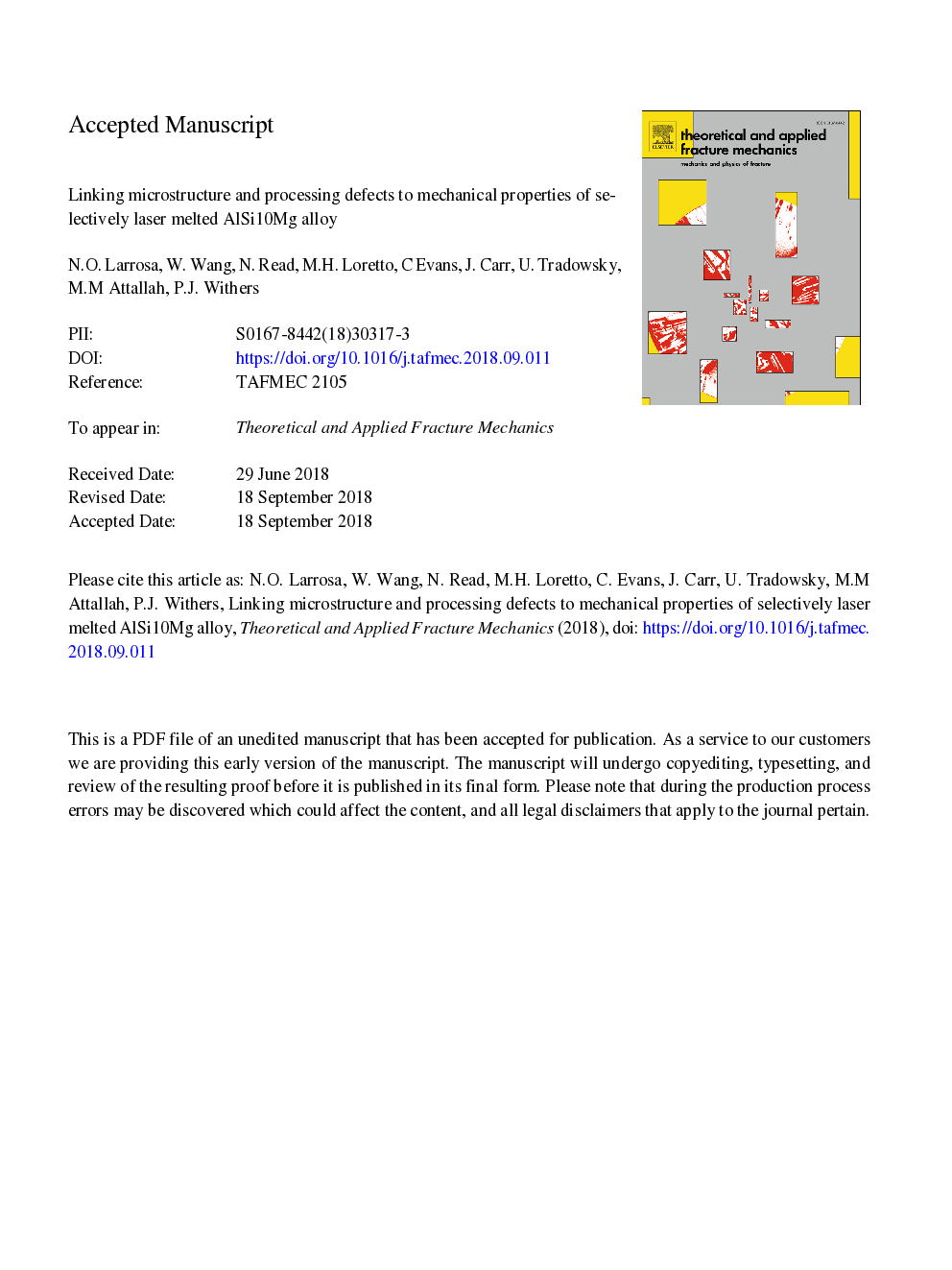| Article ID | Journal | Published Year | Pages | File Type |
|---|---|---|---|---|
| 11027766 | Theoretical and Applied Fracture Mechanics | 2018 | 23 Pages |
Abstract
Here we analyse the relationship between the monotonic and cyclic behaviour of cylindrical AlSi10Mg (CL31 AL) samples fabricated by Selective Laser Melting (SLM) to the build direaction, the presence of manufacturing defects (pores, voids, oxides, etc.) and the beneficial effect of post-processing - T6 and hot isostatic pressing (HIP) - treatments. Correlative Computed Tomography (X-ray tomography, optical microscopy, electron backscatter diffraction, SEM and TEM) is used to characterise the microstructure and the three-dimensional (3D) structure of fatigue samples to shed light on the role of defects on the experimental fatigue behaviour. Pancake-shaped pores are observed in the plane of the deposited layers having a 130% higher volume fraction for the vertical layering deposition (VL) than for horizontal layered (HL) orientations, and being larger and flatter. Further, while T6 treatment had relatively little effect on reducing porosity, the HIPping reduced the pore fraction by 44% and 65% for VL and HL samples, respectively. T6 + Hipping decreased the yield stress and the ultimate tensile strength considerably while increasing elongation and reduction of area accordingly. Our results suggest that the fatigue life seems to be dominated by the presence of these crack-like (pancake-like) defects perpendicular to the loading direction such that it is better to build samples transverse to the highest fatigue loads. In this case, both T6 heat treatment and HIPping appear to reduce the fatigue strength of the material regardless of the AM deposition scheme as they tend to enlarge and collapse pores/voids to flat crack-like defects.
Related Topics
Physical Sciences and Engineering
Engineering
Mechanical Engineering
Authors
N.O. Larrosa, W. Wang, N. Read, M.H. Loretto, C. Evans, J. Carr, U. Tradowsky, M.M. Attallah, P.J. Withers,
